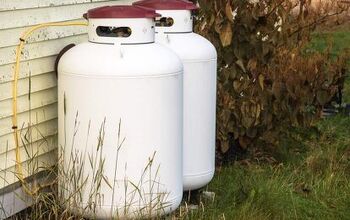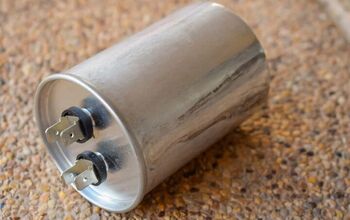10 Best Indoor Plants To Help With Allergies

Many homeowners look forward to bringing their plants inside and enjoying their indoor gardens during the fall and winter. While this is quite rewarding, it can quickly backfire if you are prone to allergies, depending on which plants you have. So, what are the best indoor plants to help with allergies?
Indoor plants like pott mums, English ivy, and aloe vera can help with allergies, remove toxins, and produce oxygen in your home. Golden pothos, parlor palms, and Chinese Evergreens can also improve the air quality in your home. The worst indoor houseplants for allergies are Dahlias, African violets, yucca, weeping figs, ferns, and orchids.
Ficus is a great plant for fighting allergies, unless you are allergic to latex. It’s important to research houseplants before you bring them inside, as even healthy plants can produce unwanted effects. Follow along as we highlight the 10 best indoor plants to help with allergies.
10 Allergy-Safe Indoor Plants
1. Pot Mum
Pot mums are one of many Chrysanthemum varieties that can help with allergies. Not only do pot mums help clean the air, but they are also quite low-maintenance. You can even grow pot mums from cuttings; the results come quickly.
Anecdotally, you can leave a pot mum outside, take a cutting, and start a new one as an indoor grow. Mums can survive cold weather throughout the fall and winter in many climates. That way, you can enjoy the plant’s beauty outside as you breathe clean air indoors.
2. English Ivy
Nearly 70 percent of homes contain mold, whether you can see the spores or not. Mold is responsible for many symptoms that mimic allergies, but they are more often more harmful. Luckily, indoor plants like English ivy reduce the levels of mold in the air in your house.
English ivy is even used to treat bronchitis and asthma in some cases, as it is helpful for respiratory problems. While English ivy is typically great for allergies, some people are allergic to this indoor plant. It’s worth getting tested to see if you are allergic to English ivy before you grow it indoors.
3. Aloe Vera
You must look for indoor plants that continually release oxygen and filter the air if you’re prone to allergies. Luckily, aloe vera checks both of those boxes, and it also has many practical uses. You can use homegrown aloe vera to treat sunburn, bug bites, and stomach and intestinal problems.
It also comes in handy if you live in a house with generally dirty air. Ideally, you should pair your aloe vera plant with other allergy-safe indoor plants and an air purifier. That ensures that your air is nearly constantly clean.
4. Golden Pothos
Golden pothos is one of the best indoor plants to help with allergies because of how well it filters the air. It can even help remove formaldehyde from the air, which can otherwise cause respiratory problems. Well-respected institutions like NASA have studied and recommended golden pothos for its many benefits.
Golden pothos is easy to grow indoors if you have a great lighting setup. Otherwise, you must put it in a spot where it gets 8-10 hours of sunlight per day. Doing so will ensure that your golden pothos releases as much oxygen as possible and continually cleans the air.
5. Parlor Palm
Look no further than parlor palms if you want a low-maintenance indoor plant that will add character to your home. You only need to water parlor palms once every 1-2 weeks, and they rarely require pruning. Female parlor palms are particularly good for allergies because they don’t produce pollen.
Conversely, male parlor palms may trigger your allergies, especially in a confined space or small home. Parlor palms can filter harmful toxins from the air, such as carbon monoxide, xylene, and benzene. You can grow parlor palms with artificial lights, but they can also thrive near a sun-facing window.
6. Chinese Evergreen
Benzene and formaldehyde are harmful to respiratory health, and they are present in the air in many homes. Luckily, Chinese evergreen continually removes these harmful toxins from the air in your home. Chinese evergreen can improve the air quality and help fight allergies, but it can have the opposite effect as well.
For example, female Chinese evergreens produce pollen that can trigger allergies in some people. As a self-pollinating plant, Chinese evergreens must release pollen to reproduce. That said, pollen doesn’t negatively affect everyone’s allergies, and so it is the perfect indoor plant if that applies to you.
7. Snake Plant
What sounds better than waking up to clean air at home? That’s something you can expect if you grow snake plants indoors as they are powerful air filters. Snake plants are most active at night when they filter toxins like formaldehyde from the air.
Simply set your grow lights to a timer, so they run for 8-10 hours daily. You can run your grow lights for as long as 12 hours. However, snake plants need at least 6-8 hours without light daily, so they can rest and recover.
8. Ficus
Unless you are allergic to latex, Ficus is one of the best allergy-safe indoor plants. Ficus can help relieve allergy symptoms and respiratory problems,as it removes trichloroethylene from the air. However, it’s dangerous to grow Ficus indoors if you are allergic to latex.
9. Fiddle Leaf Fig
Fiddle leaf fig is often praised for its positive effects on respiratory and mental health. The air-purifying qualities of this plant has made it quite popular in recent years. Ideally, you must fertilize fiddle leaf figs once every few months for the best results.
Fiddle leaf figs do best in 6-10 hours of sunlight or artificial grow lights. Be patient, as it takes a while t first for fiddle leaf figs to grow. You can expect your fiddle leaf fig to grow up to 1-2 feet yearly with proper care.
10. Spider Plant
Spider plants are popular among indoor gardeners who suffer from asthma. That’s because spider plants frequently filter the air and remove harmful toxins like benzene and xylene. While spider plants can help with allergies, some people are allergic to them, but it’s rare.
A simple allergy test can tell you whether or not you’re allergic to spider plants. It’s easy to grow spider plants indoors if you keep them in indirect light. Ideally, you should water your spider plant once weekly or as needed if the soil becomes dry.
What Are The Worst Houseplants For Allergies?
Ferns and dahlias are among the worst indoor plants for homeowners with allergies. Respiratory problems and hay fever are common symptoms for people who are allergic to ferns. Dahlias often trigger many people’s allergies indoors because of how much pollen they produce.
Weeping fig is another plant that people often grow indoors because of the plant’s look, but it doesn’t always go well. That’s because weeping figs release sap and particles that can trigger effects similar to an allergic reaction to latex. Avoid growing yucca plants indoors if you have asthma or seasonal respiratory problems.
Yucca plants can also cause contact dermatitis which is quite uncomfortable and can get worse as the effects continue. African violets, orchids, and junipers can also trigger allergies and respiratory problems when you grow them indoors.
Summing It Up
Pot mums, English ivy, aloe vera, and golden pothos are among the best indoor plants to help with allergies. You can also help remove allergens and toxins from the air with spider plants, fiddle leaf figs, and snake plants. Avoid ferns, dahlias, and yucca plants if you have asthma or are prone to allergies indoors.
Related Guides:

Nick Durante is a professional writer with a primary focus on home improvement. When he is not writing about home improvement or taking on projects around the house, he likes to read and create art. He is always looking towards the newest trends in home improvement.
More by Nick Durante



























